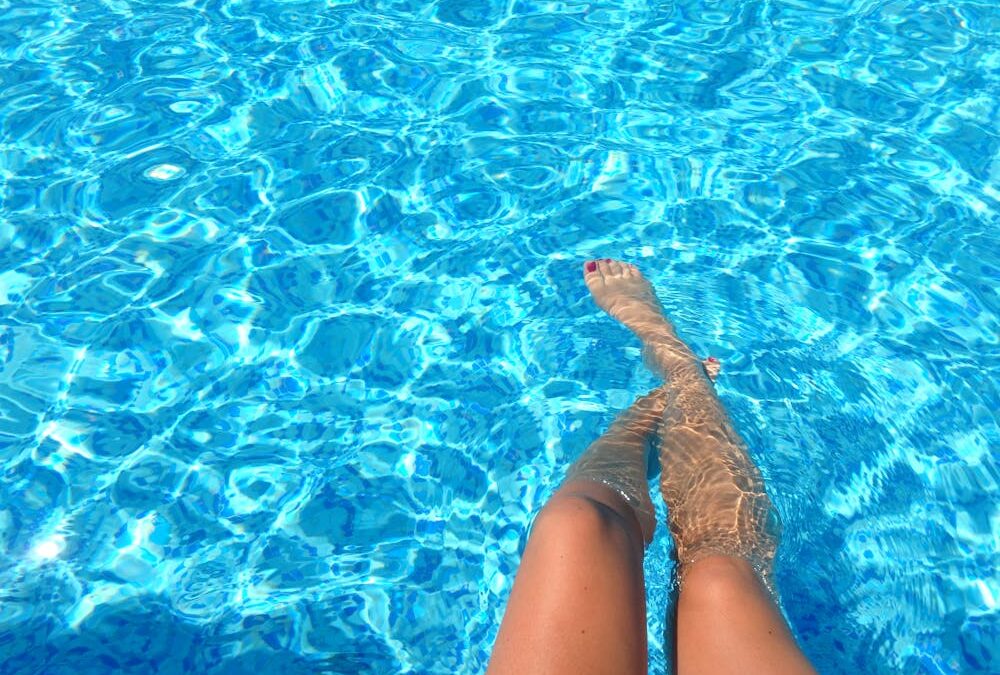A pristine pool with sparkling, clear water is more than just visually appealing—it’s essential for health, safety, and enjoyment. Maintaining crystal-clear water may seem complicated, but with a basic understanding of pool chemistry, you can ensure a clean and balanced swimming environment.
This guide breaks down the essentials of pool chemistry into easy-to-understand steps, helping you maintain a healthy pool year-round with confidence.
The Core Elements of Pool Chemistry
To keep pool water safe and clear, several key factors must work in harmony. These include chlorine, pH levels, total alkalinity, calcium hardness, and cyanuric acid. Let’s explore each of these elements:
1. Chlorine: The Sanitizer
Chlorine is the foundation of pool sanitation, responsible for eliminating harmful bacteria, viruses, and algae.
- Ideal Range: 1–3 parts per million (ppm).
- Why It Matters: Without proper chlorine levels, bacteria and algae can thrive, turning your pool into a health risk.
- Maintenance Tip: Test chlorine levels daily during heavy use and “shock” the pool with extra chlorine if levels drop too low.
2. pH Levels: Balancing Acidity and Alkalinity
pH measures the water’s acidity or alkalinity on a scale of 0–14. Proper pH levels ensure swimmer comfort, protect pool surfaces, and maximize chlorine effectiveness.
- Ideal Range: 7.2–7.6.
- Low pH (< 7.2): Acidic water causes irritation and corrodes pool surfaces.
- High pH (> 7.6): Alkaline water reduces chlorine efficiency and causes cloudy water.
- Maintenance Tip: Use pH increasers (sodium carbonate) or reducers (muriatic acid) to balance levels, and test weekly.
3. Total Alkalinity: A Buffer for Stability
Total alkalinity acts as a buffer, stabilizing pH levels and preventing rapid fluctuations.
- Ideal Range: 80–120 ppm.
- Why It’s Important:
- Low Alkalinity: Causes pH levels to fluctuate wildly, leading to corrosive water.
- High Alkalinity: Makes pH harder to adjust.
- Maintenance Tip: Use baking soda to increase alkalinity or muriatic acid to lower it.
4. Calcium Hardness: Protecting Surfaces and Equipment
Calcium hardness refers to the amount of calcium in the water. Proper levels prevent damage to pool surfaces and equipment.
- Ideal Range: 200–400 ppm.
- Low Calcium: Causes etching or corrosion of pool walls and surfaces.
- High Calcium: Leads to scaling and deposits.
- Maintenance Tip: Use calcium increasers or dilute the water to maintain proper levels.
5. Cyanuric Acid: Protecting Chlorine
Cyanuric acid acts as a stabilizer, protecting chlorine from being degraded by UV rays in outdoor pools.
- Ideal Range: 30–50 ppm.
- Too Much: Reduces chlorine’s effectiveness, requiring higher chlorine levels to sanitize the water.
- Maintenance Tip: Use stabilizers cautiously and test levels regularly to avoid overuse.
Tools and Techniques for Testing Pool Chemistry
Regular water testing is key to maintaining balanced pool chemistry. Here are common tools you can use:
- Test Strips: Quick and easy—just dip the strip into the water and compare the results to a color chart.
- Pros: Fast and affordable.
- Cons: Less precise than other methods.
- Liquid Test Kits: Use reagents to measure chlorine, pH, and alkalinity levels.
- Pros: Accurate and reliable.
- Cons: Requires more time and practice.
- Digital Testers: Provide precise readings with minimal effort.
- Pros: Highly accurate and user-friendly.
- Cons: Higher initial cost.
Testing Tip: Check chlorine, pH, and alkalinity weekly—daily during heavy use—to ensure water remains balanced.
Common Pool Chemistry Problems and Solutions
Even with regular maintenance, issues can arise. Here are a few common problems and how to solve them:
- Cloudy Water: Caused by imbalanced pH, low chlorine, or poor filtration.
- Solution: Test the water, adjust pH and chlorine levels, and clean the filter.
- Algae Growth: Often results from low chlorine levels or poor water circulation.
- Solution: Shock the pool, brush surfaces thoroughly, and maintain proper chlorine levels.
- Skin and Eye Irritation: Typically caused by imbalanced pH or high chloramines (a byproduct of chlorine).
- Solution: Balance pH levels and shock the pool to remove chloramines.
Tips for Simplifying Pool Chemistry Maintenance
Maintaining balanced water doesn’t have to be overwhelming. Here’s how to streamline the process:
- Automate Where Possible: Use automatic chemical feeders or smart monitors to reduce manual testing and adjustments.
- Clean Regularly: Skim debris, vacuum the pool, and brush walls weekly to keep water clean and balanced.
- Stay Consistent: Regular maintenance and testing prevent small issues from becoming big problems.
Environmental Considerations for Pool Chemistry
Maintaining pool water responsibly can help reduce environmental impact. Consider these eco-friendly practices:
- Alternative Sanitizers: Saltwater systems and mineral purifiers can minimize the use of harsh chemicals.
- Sustainable Products: Use biodegradable, non-toxic cleaning agents.
- Recycle Water: Instead of draining the pool, treat and reuse the water when possible.
Conclusion
Understanding and maintaining proper pool chemistry is the key to enjoying crystal-clear, safe water all year round. By mastering the basics—chlorine, pH, alkalinity, calcium hardness, and cyanuric acid—you can prevent common issues like cloudy water, algae growth, and equipment damage.
With regular testing, consistent pool care, and attention to detail, maintaining a clean and inviting pool becomes a straightforward and rewarding process.

Recent Comments